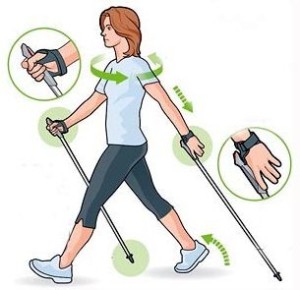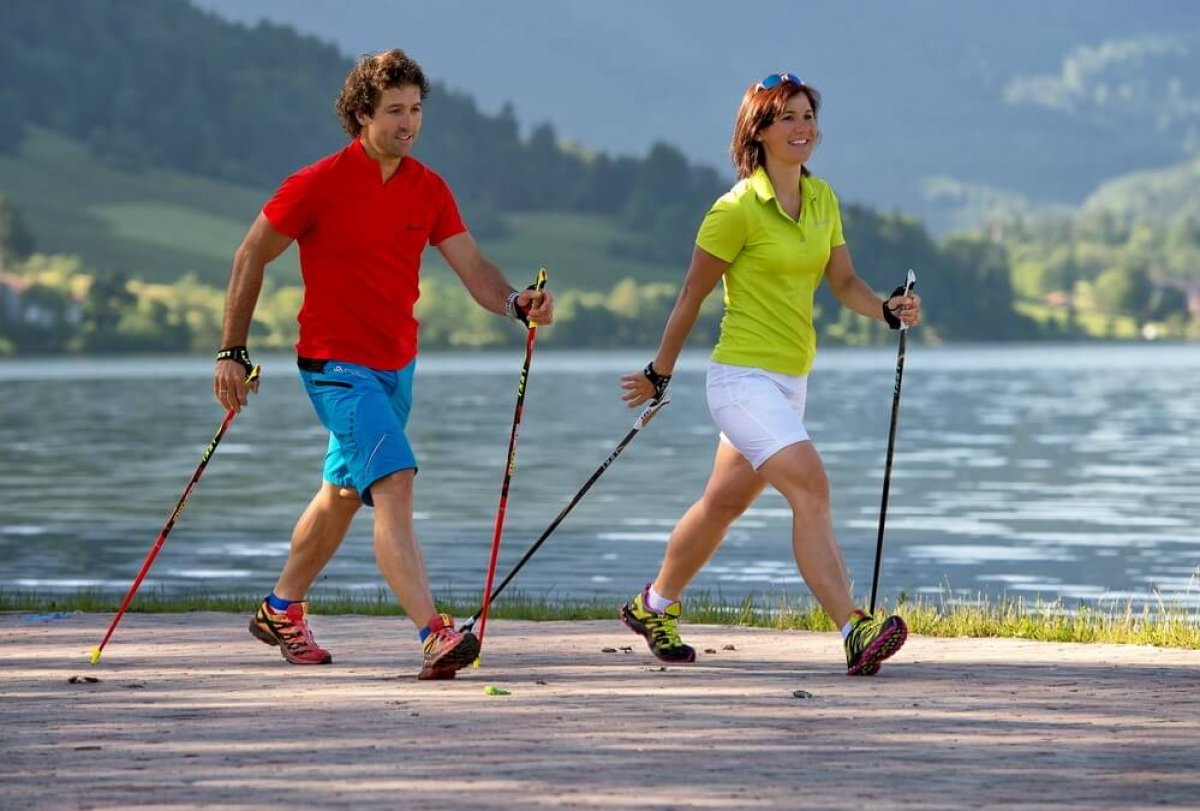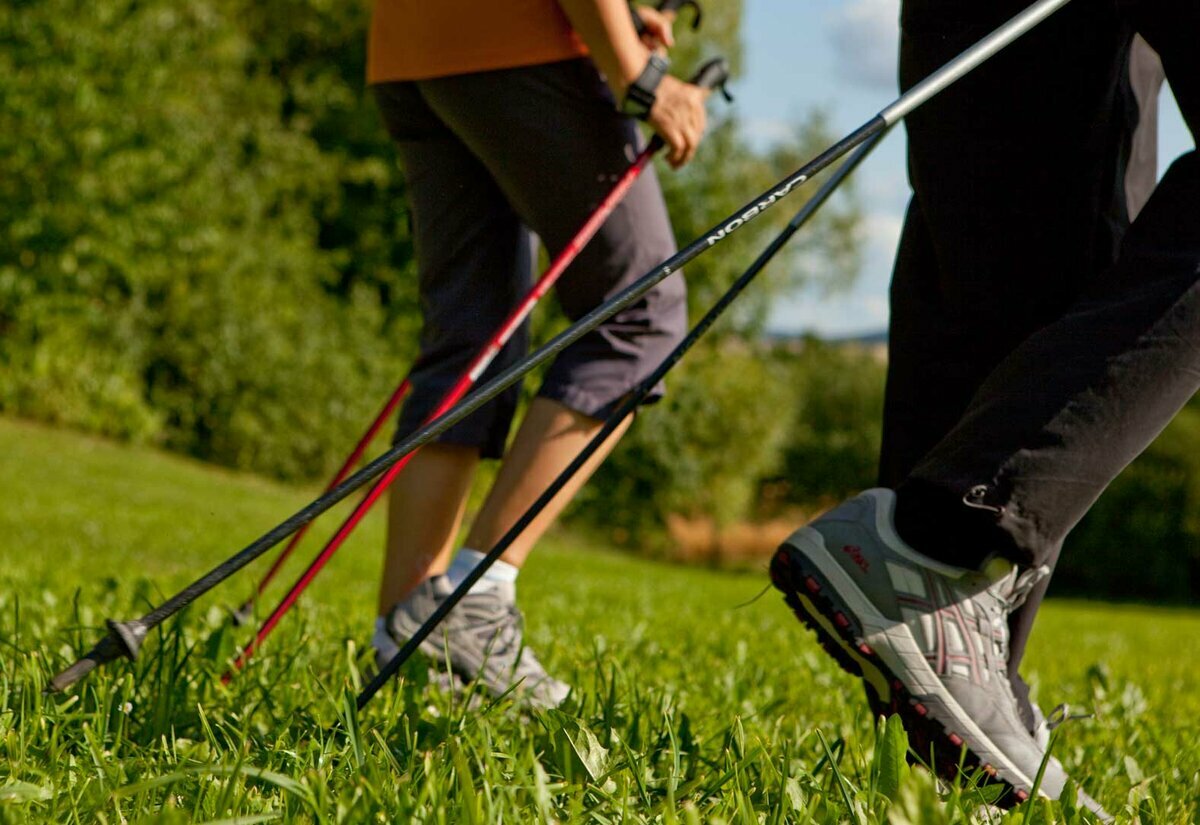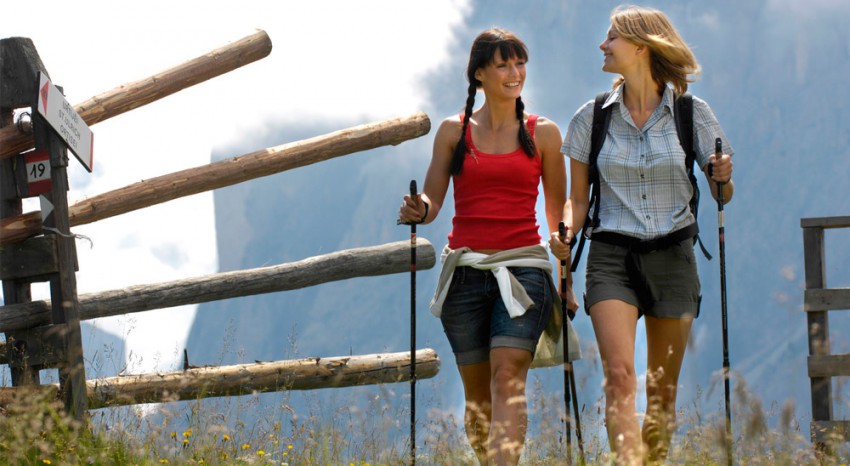
The successful use of Nordic walking in physiotherapy exercises is clear evidence of the effectiveness of such exercises. If initially a person with ski sticks attracted the attention of passers-by, today this no longer surprises anyone.
The very name of this species speaks of its origin: Nordic, Scandinavian, Finnish, Nordic walking. In order to keep fit in the off-season, Finnish skiers also train in the summer. This type of training became the basis of the Scandinavian walking technique – physical exercises according to a specific program using sticks.
The benefits of the technique
Classes on this program proven to be effective in rehabilitation courses. The success is due to the high health potential of the method for health and its complex effect on the body. In humans, as a result of Scandinavian walking:
- the level of endurance increases;
- the blood supply to organs improves, the risk of ischemic disease decreases, the work of the cardiovascular system is normalized;
- muscle spasms disappear due to the elimination of pain syndrome in any of the vertebral regions;
- resistance to stress, depressive conditions increases;
- blood pressure, sugar levels are normalized;
- the level increases cerebral blood supply;
- weight decreases (compared to other types of walking, the Scandinavian one burns the most calories);
- coordination of movements improves, a sense of balance is increased;
- the work of the musculoskeletal system is normalized (it helps to fight various dysfunctions of the ODA, returning a person to a full life);
- energy consumption increases due to the activation of metabolism.
Distinctive features of Nordic walking
The use of special poles allows you to remove part of the load from your own weight: the load on the joints of the legs and lumbar spine is reduced by up to 35%. Traditional walking has a less effective effect on the body.
During training, a person leans on poles, while the back remains straight. A muscle corset is formed around the spine, due to which the load on the intervertebral discs decreases, and their compression decreases. As a result, there is a beneficial effect on the cartilage tissue covering the joints – its nutrition improves.
The following positive changes also occur in the body:
- during training, all parts of the body are involved, that is, almost all muscles are worked out. For comparison: while running, 65% of muscles work, swimming – 45% of working muscles, cycling – 42%, and Nordic walking – about 90%.
- The work of all organs and systems is normalized. The volume of oxygen consumed increases due to an increase in the load on the muscular system, which is 45% more compared to traditional walking.
- Microcirculation and hemodynamics are improved. Cardiac output increases.
- Cerebral and cardiac activity is activated.
Indications and recommendations
Nordic walking is successfully used as an element of rehabilitation medicine in a number of specialized medical institutions. It is indicated for people during the recovery period after spinal injuries, lung diseases, who have undergone surgery on the musculoskeletal system, as well as after heart attacks.
Classes using this technique are recommended for the following diseases: vegetative-vascular dystonia, arthrosis, orthopedic disorders, diseases joints, osteoporosis, osteochondrosis. It is advisable to practice Scandinavian walking to combat neuroses, insomnia, mild forms of depression, overweight.
Restrictions and contraindications
This kind of training is unsafe in the following cases:
- during an exacerbation of chronic diseases;
- a short period of time after surgery;
- infections, high fever, pain syndrome;
- hypertensive crisis;
- inflammation of the musculoskeletal system;
- organ dysfunction;
- diabetes in severe forms, thrombophlebitis;
- angina pectoris;
- cardiac, respiratory failure;
- degenerative changes in the spine, leg joints.
Regardless of the severity of the health problem, you must first consult your doctor. You should not start classes if you have not received appropriate advice from a specialist.

Equipment
The only equipment is sticks. Basically, the requirements apply only to clothing. So, it should be:
- comfortable;
- preference for natural fabrics, since they have the ability to absorb moisture, allow air to pass through;
- waterproof (in rainy weather – light windbreaker);
- warm (in the cold season it is better to put on a T-shirt, sweater / sweatshirt first, and a windbreaker on top is more reliable protection from the cold than one thing, even the warmest and densest).
When it comes to footwear, there are very few requirements: flexibility and good grip of the outsole. Sneakers with a thick and springy sole and a high stiff heel are optimal.
For Nordic walking, only special poles made of carbon fiber, composite materials or aluminum are used. They should be lightweight but strong, capable of withstanding heavy loads. At the ends of the sticks there is a tip made of hard alloy, the presence of which is due to the need for additional grip on a slippery surface. The rubber tip on the tip helps to cushion the impact when walking on paved areas.
The lanyard has a special purpose – a wide removable belt. It is fastened to the sticks with the help of buttons, fixed on the wrists with an overlap so as not to disturb blood circulation. The strap is included with the poles and is designed to hold them when moving backward and grip when moving forward (that is, the handle can be released, and then easily grabbed and lean on it).
Walking technique
The first phase of walking is support, the second is transfer. A distinctive feature of the technique is the roll of the foot, which is unusual for many: the movement begins from the heel, then the foot goes down to the toes. Basic rules:
- First phase: first, the foot is placed on the heel bone, then the back of the heel touches the surface, and at the end – the tips of the toes. That is, it is necessary to perform a rolling motion with the feet. The second phase begins when the foot is in full contact with the surface – this leg becomes the supporting leg, the second leg is transferred.
- To avoid disorders with the health of the wrist joint, the hand that is pulled back should open after the push. If done correctly, the stick is released and does not fall due to secure attachment to the hand.
- If the sticks are selected correctly, they will not allow the spine to bend when moving, otherwise you need to acquire others, since the back should be straight.
- Breathing according to the scheme: inhale for two steps, exhale for the next two. With a normal walking rhythm, you need to inhale through the nose, exhale through the mout
- h, with intensive training, inhale / exhale through the mouth.
Move should be similar to skiers: the left leg works when swinging the right hand, and vice versa. The steps in width are adjusted by swinging the arms forward / backward. A wide amplitude is recommended for those who are engaged in weight loss, as in this case the load on the body increases.
Pole selection recommendations
To distribute the load evenly, it is necessary to follow the walking technique and use the correct length of poles. During training with sticks that are not suitable for a person in this parameter, the joints and spine experience increased stress.
The formula for determining the length of the sticks:
- the pace of walking is low ( beginner, recovering person, “health” group) – height x0.66;
- average walking pace (fitness group) – height x0.68;
- high walking pace (trained people, group “sport”) – height x0.7.
Values can be rounded by 1-2 cm in any direction. Sticks are divided into two types: with a fixed length and retractable telescopic (2-3 links), the latter are recommended to be selected if the purchase will be carried out in an online store.

Duration and place of training
You can practice Nordic walking anywhere in the fresh air. Training on rugged terrain with weights is more effective.
In other matters, such as the intensity, pace and duration of trainings, it all depends on the individual. The best option is at least three times a week for half an hour. Daily training is allowed, but lasting one hour. You should not overload your body. Nordic walking will ensure the most important thing – good health, a fit and beautiful body.
